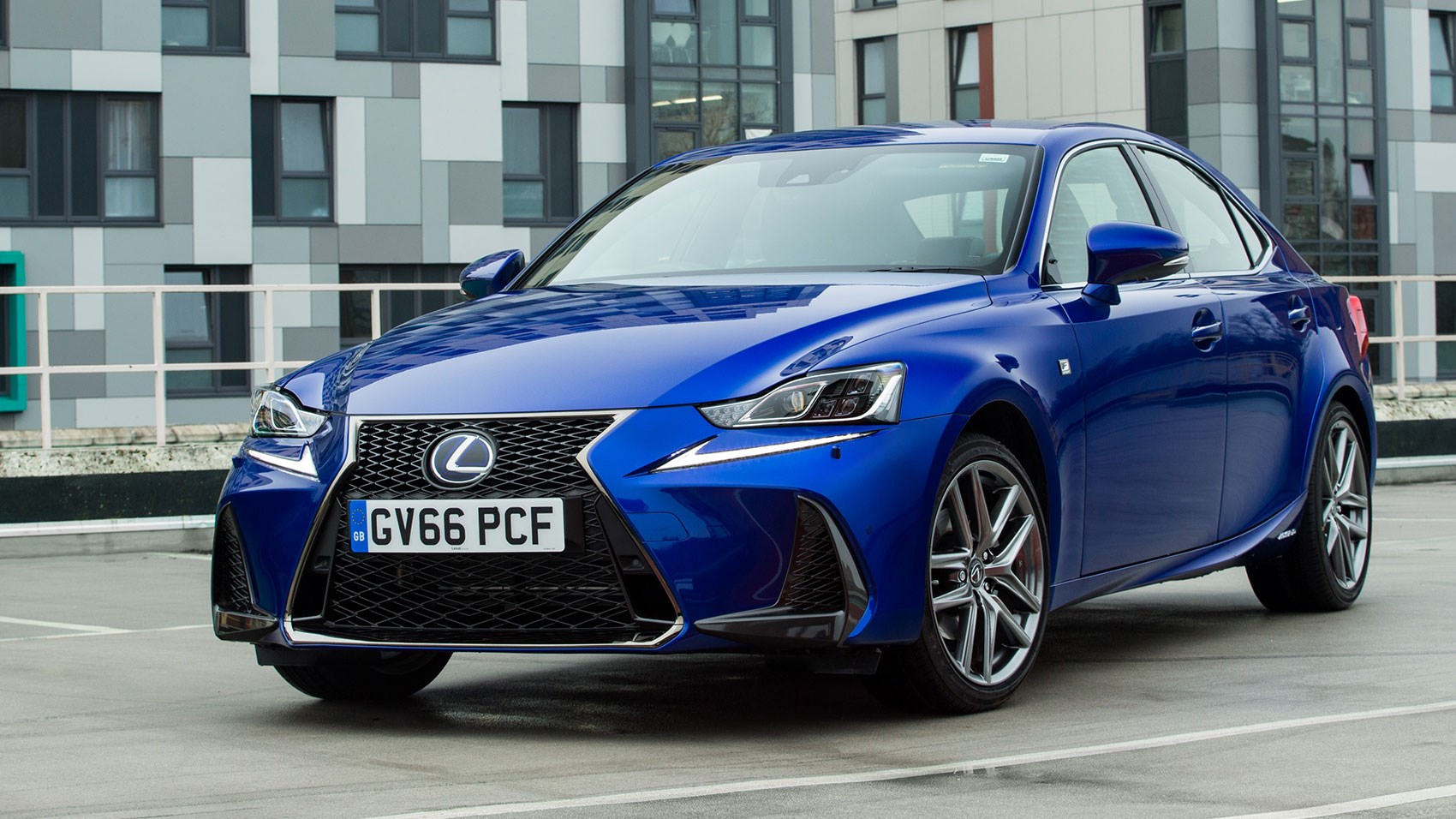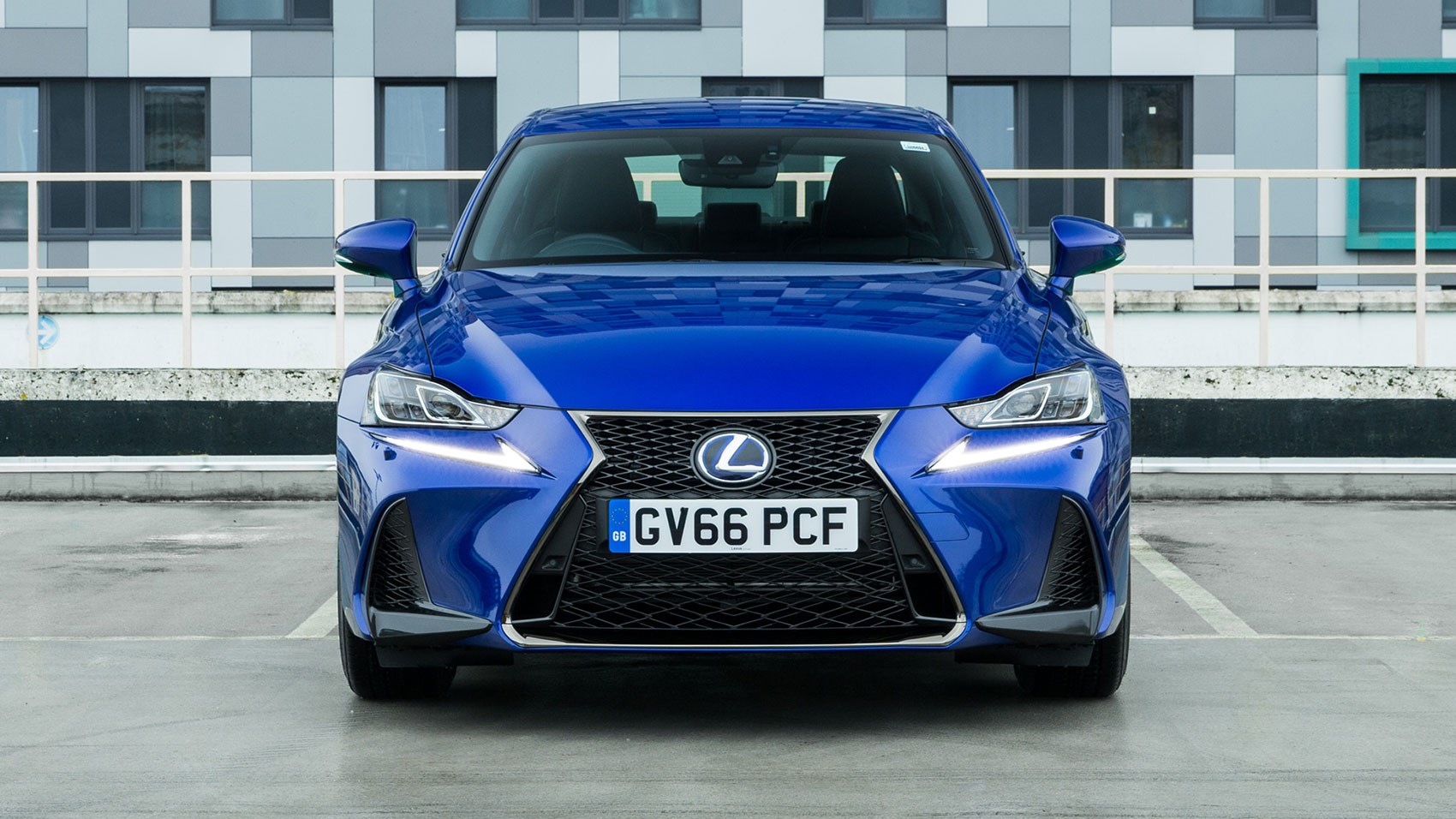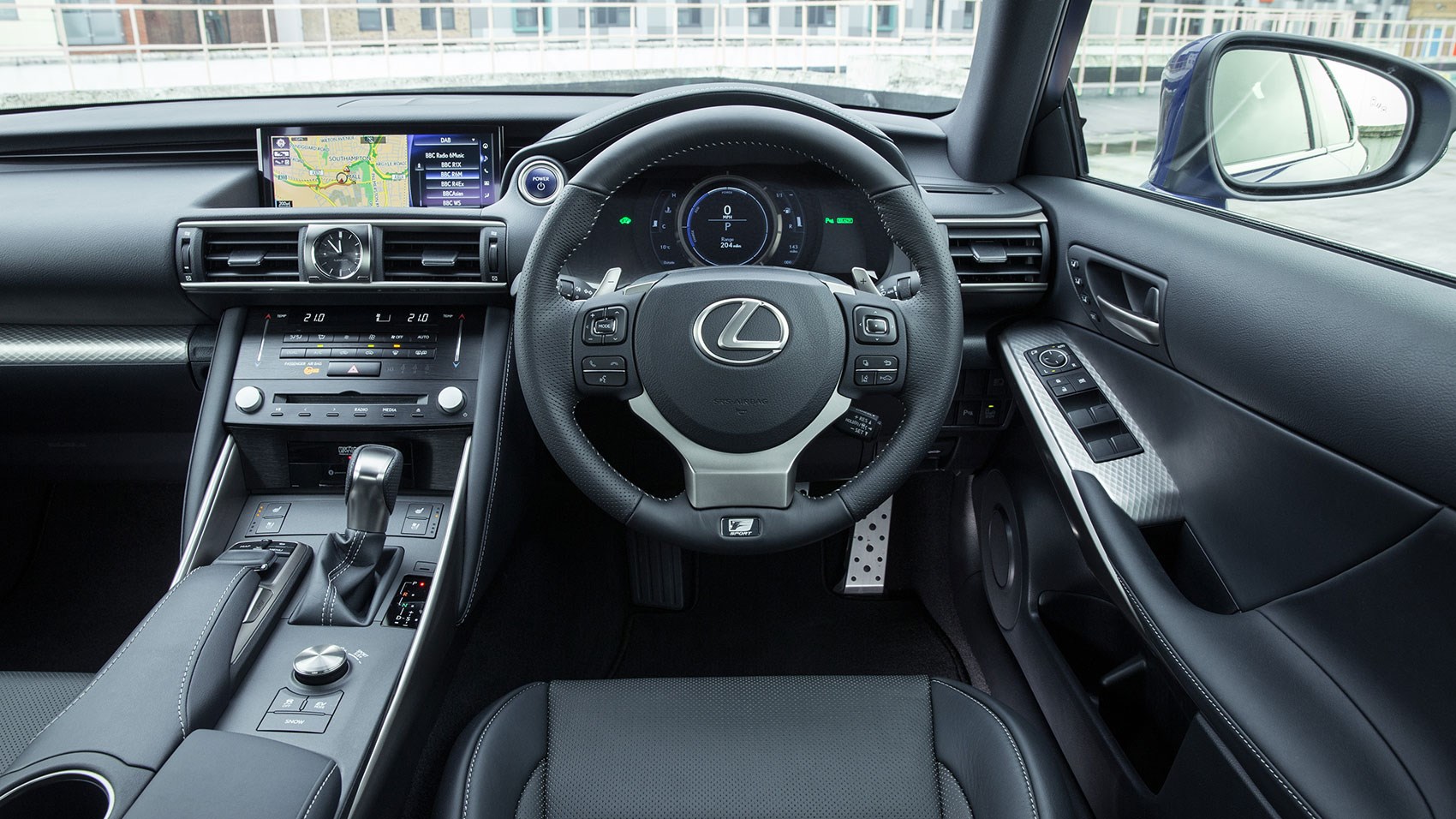► 2017 Lexus IS300h road test
► The alternative business-class saloon gets an update
► Petrol hybrid powertrain more refined than diesel rivals
► Leftfield styling and fantastic cabin add genuine appeal
What do you reckon all those ex-Saab owners drive now? On paper the Lexus IS ticks all the right boxes – it’s not German, it has a fabulous interior, and it’s very safe.
It’s a good looker as well, particularly after a raft of revisions for 2017 including sharp new LED head- and tail-lights, together with an angrier grille design.
Lexus even claims to have pulled off some chassis alchemy too, promising extra comfort and a better drive to close the gap to its Teutonic rivals. We’re driving the petrol-electric hybrid variant here, the IS300h, to find out.

What’s new for 2017?
A lot of nitpicking. Lexus says it’s sold more than a million IS saloons around the world – what better group of people to ask what needs changing than its existing customer?
As a result, the 2017 interior upgrades read like the snagging list on a new-build home. Customers fed up with banging their knee on the air conditioning control panel get a smaller unit surrounded by padding, a new cupholder is shaped to accommodate a smartphone, and the love-it-or-hate-it mouse-like multimedia controller gets an Enter button for easier use.
Lots of little things that add up to a tangible upgrade, in short. In addition to those cosmetic, cabin and suspension changes (more on the latter in a bit), Lexus has added a suite of active safety systems to all but base-spec cars, where it remains an option.
Is the revised Lexus IS300h any better to drive?
It’s certainly very stable and feels resolutely planted, but the power delivery left us a bit cold on the winding Italian roads encountered on the saloon’s launch.
The 2.5-litre petrol engine and electric motor are certainly willing enough – even if the relatively modest 220bhp and 8.4 second 0-62mph sprint suggest otherwise – but the CVT gearbox dulls the powertrain’s initial response to a big boot of the throttle. The non-hybrid IS200t’s conventional auto gearbox is marginally better in this regard, but still far from engaging.
A BMW 320d is more fun to drive, and if our long-term test of the pre-facelift IS300h is anything to go by, should be more fuel efficient too.
What the IS excels at, however, is simply wafting around, maintaining momentum with sparing use of both brake and accelerator pedal, rather than the aggressive changes of pace enjoyed in the sharper 3-Series. Its petrol engine is quiet and refined on the move, with a noticeable absence of wind noise – it’s as good on a cruise as it is frustrating on a B road.

Have the chassis upgrades worked?
Obstructing the waftiness of our F Sport test car was the overly-firm suspension – this comes as standard and can’t be deleted, so there’s no Audi S Line styling on normal springs option here.
Lexus says the new IS range benefits from stronger suspension components (nominally, the lower arm assembly and number one bush) plus revised coil rates, altered shock absorber components and revised damper rates, adding up to improved handling and comfort.
We know from experience that the IS majors in the latter, so while we liked the look of our F Sport-spec car, we’d find it hard to recommend. It’s far from back-breaking, there just isn’t enough of a performance benefit to justify the negative effect the suspension tweaks have on the ride.
What else do I get for my money in an F Sport version?
Being second from top in the IS trim hierarchy, F Sport affords you some luxuries including uprated LED headlights and LED front foglights, eight-way electrically adjustable, heated front sports seats, and instrument dials that look like they’re straight out of the LFA.
Styling upgrades like 18in alloy wheels, a specific front grille and bumper design, aluminium sports pedals, perforated leather on the steering wheel and gearlever, and aluminium cabin trim separate this car from your standard IS.
You also get the Lexus Safety Suite+ package mentioned earlier, which contributes to the saloon’s five-star Euro NCAP safety rating. This includes adaptive cruise control, lane departure warning, automatic high beam and road sign display.

Verdict
The Lexus IS is a deeply likeable car thanks to its class-apart cabin and leftfield appeal. We’ve driven pre-facelift cars on standard springs which rode very nicely indeed, so it’s fair to assume updated non-F Sport cars will be as good, if not better, thanks to those chassis revisions.
In F Sport form, however, it’s harder to recommend – it might look the part but its stiff suspension is less comfortable than we’d like without delivering the kind of rewarding drive available in rival cars – most notably the BMW 3 Series and Jaguar XE.
Configure it in full post-Saab Premier spec instead for a stylish, comfortable and distinct alternative to the office car park norm.